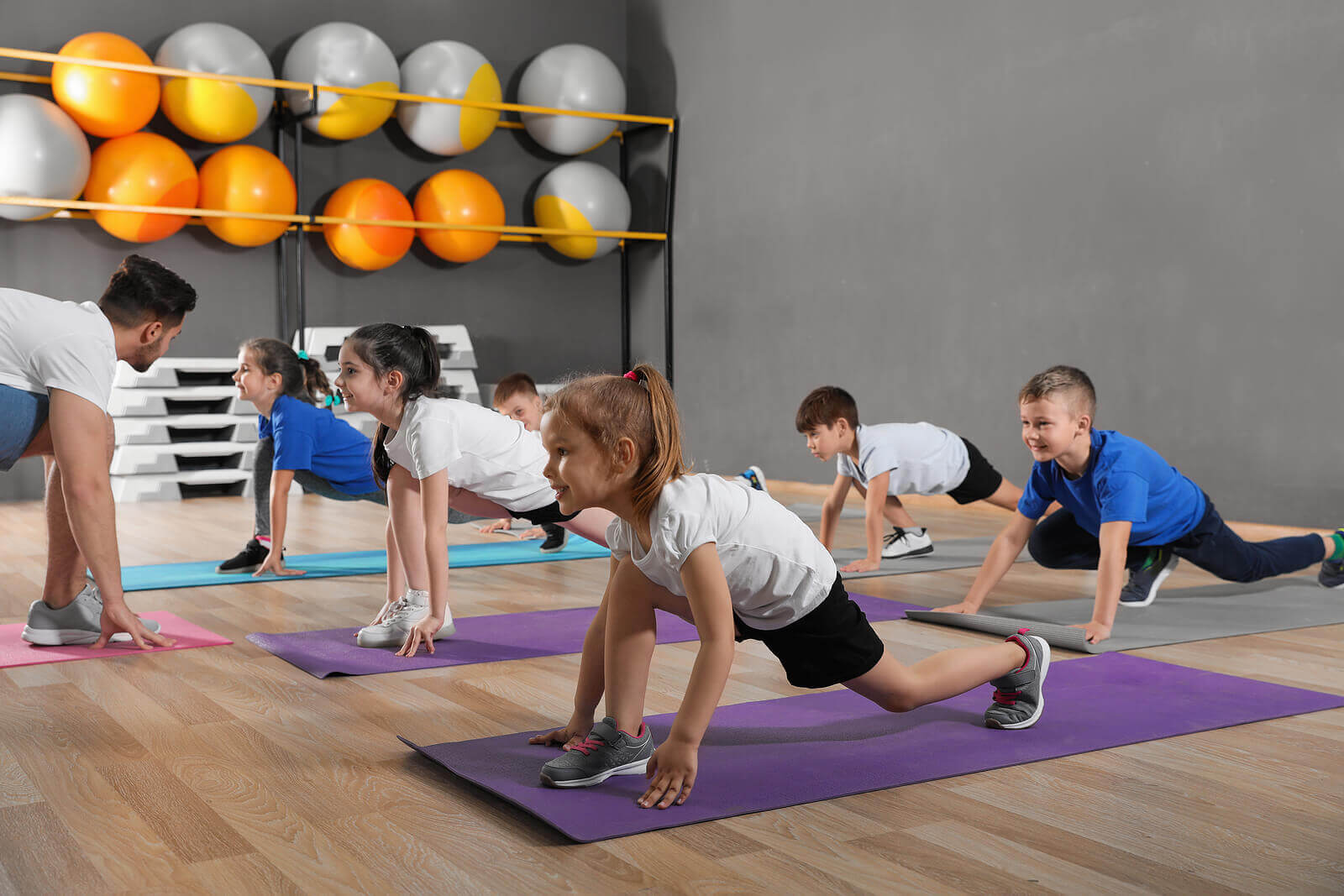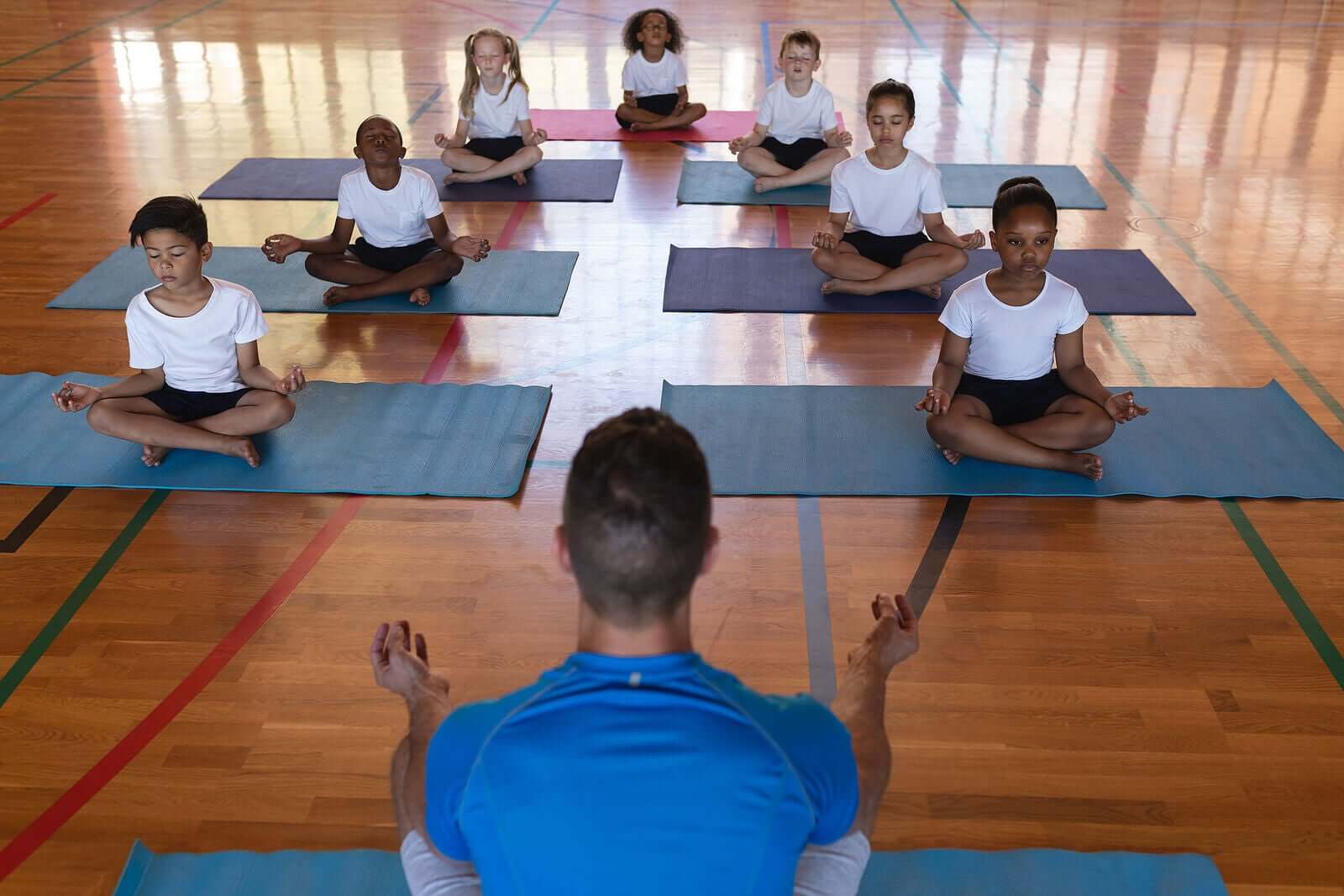Yoga in the Classroom: Keys and Benefits

The practice of yoga has many scientifically proven physical and mental health benefits for both children and adults. But what benefits can we gain by implementing the practice of yoga in the classroom?
To begin with, it’s important to note that various research studies have found that yoga in the classroom may have many benefits for children. First, the benefit that may seem most obvious has to do with wellbeing.
In addition, practicing yoga in school can also help children improve their grades. On the other hand, teachers can also benefit from this practice.

Benefits of yoga in the classroom
Yoga in school settings has shown to benefit both children and adolescents. For example, yoga in the classroom not only promotes processes having to do with self-esteem and confidence, but also helps regulate stress and improve concentration. This has very positive implications for the learning process.
Specifically, the main benefits for children of practicing yoga in the classroom are the following:
- Reduces stress and anxiety. The desire to excel and to show their worth, along with the pressure from their environment, are very stressful for children. Yoga helps to stop thoughts from racing and allows kids to live the present moment to the fullest. Therefore, it helps to reduce stress and anxiety, as well as regain peace and tranquility.
- Improves memory and attention span. Yoga helps improve memory function in both adults and children. It also helps improve children’s attention span and focus.
- Improves academic performance. By being calmer and more focused, with stress under control, children have the opportunity to devote more resources to their studies. This, in turn, significantly improves their academic performance.
- Leads to a more active lifestyle. Children spend a lot of time sitting in the classroom. So, practicing yoga helps them break the cycle of sedentary living and acquire healthy habits.
- Improves posture. One of the problems with sitting in non-ergonomic seats for too long is that it’s easy to have bad posture. The practice of yoga helps children to acquire healthy postures.
- Teaches breathing techniques. Breathing is vital for life. Breathing techniques, by themselves, help children take control of their breath. They also help them relax and oxygenate their brains.

More benefits of practicing yoga in the classroom
- Promotes full attention. Mindfulness means knowing how to be in the present. This helps children to focus on the here and now, and to value the qualities and opportunities that are available at any given time. As a result, it reduces stress and anxiety. Learning these techniques offers teachers the opportunity to help a child who is having a hard time or to calm the class if disruption occurs.
- Improves self-control. In classrooms, many problems that arise are due to children’s self-control issues. Teaching yoga techniques helps teachers to maintain order and children to improve their attitude and relationships. In fact, as children progress in their yoga practice, they’ll have more control over themselves.
- Improves coping skills. Children face a multitude of stressful situations and the practice of yoga teaches them how to cope and manage stress properly.
- Improves the immune system. The regular practice of yoga improves immunity, which helps them to be more prepared for different illnesses.
- Improves quality of sleep. Children need a lot of sleep and good sleep. In this sense, yoga is helpful because, by promoting a calmer life, children are more relaxed at bedtime. This helps them not only to get into bed sooner, but to sleep much better.
Teachers also benefit
The practice of yoga in the classroom also has many benefits for teachers. On the one hand, if students are calmer and more attentive, teachers can do their job better. This will help them feel more self-reliant and committed to their work.
At the same time, teachers who do yoga with their students develop a closer bond with them. This facilitates the creation of a climate of greater confidence. In addition, teachers can gain the same physical and emotional benefits as children.
Now that you know the many benefits of yoga in the classroom, what are you waiting for to try it with your students?
All cited sources were thoroughly reviewed by our team to ensure their quality, reliability, currency, and validity. The bibliography of this article was considered reliable and of academic or scientific accuracy.
- Butzer, B., & Lynn, L. (2018). Seven Ways That Yoga Is Good for Schools. Greater Good: The Science of a Meaningful Life. Disponible el https://greatergood.berkeley.edu/article/item/seven_ways_that_yoga_is_good_for_schools
- Ferreira-Vorkapic, C., Feitoza, J., Marchioro, M., Simões, J., Kozasa, E., & Telles, S. (2015). Are There Benefits from Teaching Yoga at Schools? A Systematic Review of Randomized Control Trials of Yoga-Based Interventions. Evidence-Based Complementary And Alternative Medicine, 2015, 1-17. doi: 10.1155/2015/345835
- Serwacki, M., & Cook-Cottone, C. (2012). Yoga in the Schools: A Systematic Review of the Literature. International Journal Of Yoga Therapy, 22(1), 101-110. doi: 10.17761/ijyt.22.1.7716244t75u4l702